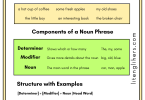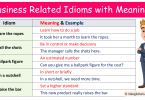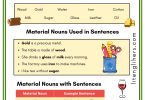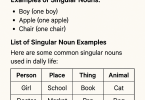Sentence Structure Grammatical Rules
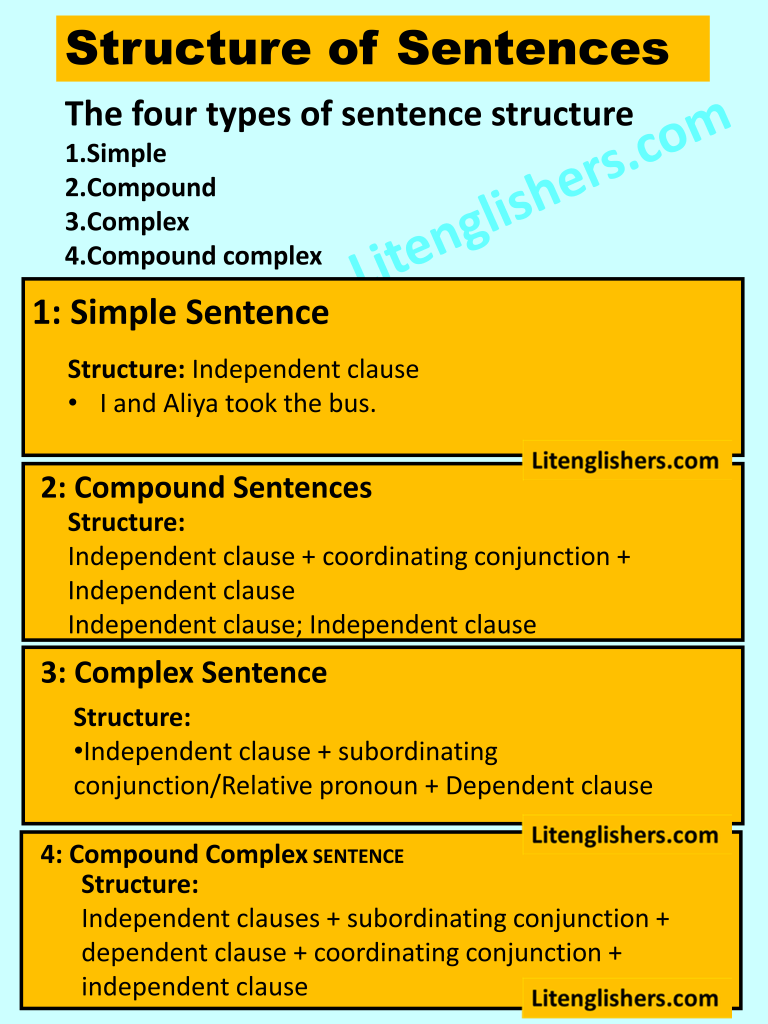
Sentence structure is how all the parts of a sentence fit together. If you want to make more advanced and interesting sentences, you first have to understand how sentence structure works. The first question that popped into our mind, when we talked about the sentences is, what sentence and its structure?
Sentence def:
“A group of words that give full meaning by itself is known as the sentence“.
Structure Def:
“To construct and arrange elements with a plan is known as structure.”, we define sentence structure as …
“A way to arrange sentences grammatically with a pre-planned structure is known as sentence structure.”
Example:
- I like coffee.
- She wrote a letter
Clauses can be divided into two Kinds
If every sentence were as simple as subject + verb + object, books would be so boring! That’s why English has developed a few different sentence structures to keep things interesting and give us more options for speaking and writing.
- Dependant Clause
- Independent Clause
1: Dependent Clause or subordinating clause
Subject + Verb
Sentences dependent on other sentences to make a proper sentence means the sentences have no meaning at all or cannot stand alone in their sentence and always depend on the main clause.
For Example:
” Because I missed my bus.”
This sentence doesn’t give any clear-cut meaning it means the sentence needs an external force to complete its meaning so here we need another sentence to complete the meaning of this sentence.
“I was late because I missed my bus.” Here we conjoin two clauses.
2: Independent Clause or main clause
Subject+ Verb
Independent clauses are those sentences that are not dependent on any sentence to make a sentence which means it makes its sentence by having a meaning and giving complete sense by itself or thought.
For Example:
“I was late.” This sentence gave its full meaning without depending on another sentence.
To understand the structure of the sentences in an easy-peasy way, Let’s think according to the mindset of our society, suppose that an independent clause is a (boy) who doesn’t need anyone’s help and the dependent clause is a (Girl) who always needs someone’s help.

The four types of sentence structure
- Simple (Boy)
- Compound (Boy+ Boy)
- Complex (Boy + Girl)
- Compound complex (2 Boys +Girl)
1: Simple Sentence (Boy)
“A sentence that gives complete thought in itself.”
Structure: Independent clause
(Boy) Here boy means the simple sentence is an independent clause that doesn’t depend on anyone to complete its meaning.
Examples:
- I like tea.
- Rikza likes coffee.
- I and Alaya took the bus.
- I looked for Muqadas and Zufisan at the bus station.
The use of compound subjects, compound verbs, prepositional phrases ( “at the bus station”), and other elements help lengthen simple sentences, but simple sentences often are short. The use of too many simple sentences can make writing “choppy” and can prevent the writing from flowing smoothly.
2: Compound Sentences (Boy + Boy)
As we assume by the name, compound means to conjoin two or more independent clauses and joined by coordinating conjunction.
(Boy+Boy ) It means two independent clauses and it can be more than two independent clauses. If we join these independent clauses then it’s OK, but if we make them apart, then it’s also OK, the sentences can stand by themselves by giving their meaning. The reason is that every sentence is independent and gave its meaning so if they are apart they give their thought.
Structure:
- Independent clause + coordinating conjunction + Independent clause
- Independent clause; Independent clause
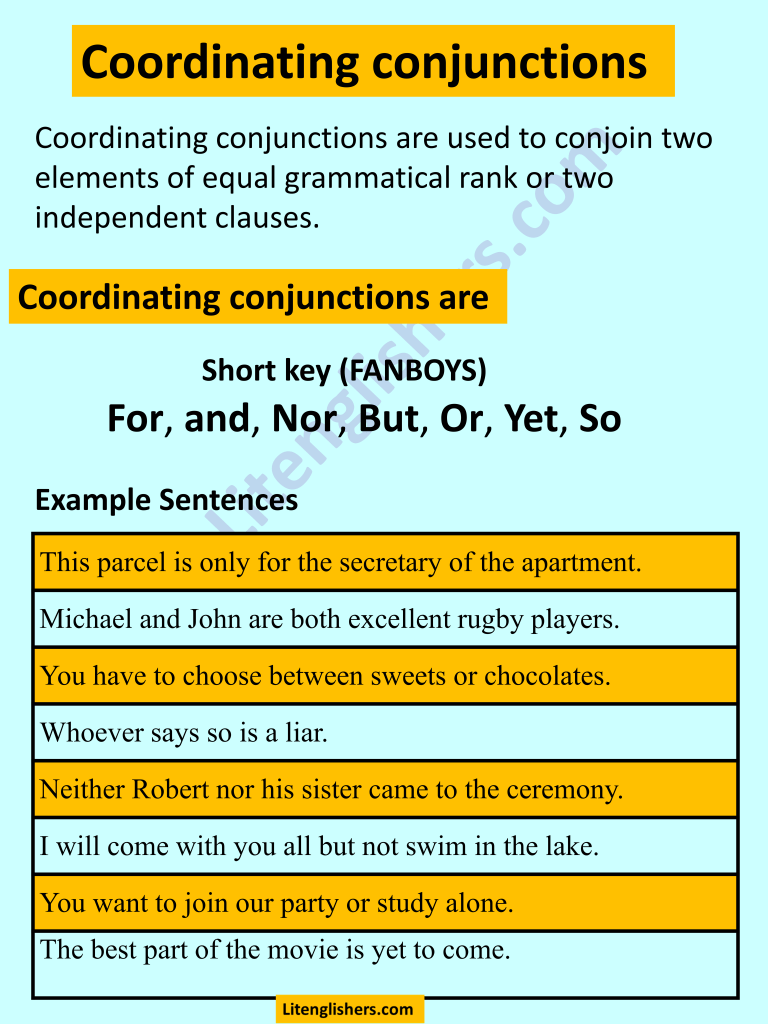
We use two types of structures to make compound sentences.
(I like tea and Rikza likes coffee) In this sentence ( and ) works as a coordinating conjunction(for, and, nor, but, or, yet, so (fanboys)) to conjoin two sentences to give the full meaning of a sentence. But if we don’t use ( and) then we use (;) semicolon mark (i like tea; Rikza likes coffee.)
Example:
- Hina waited for the bus, but the bus was late.
- I looked for Maryam and Saima at the bus station, but they arrived at the station before evening and left on the bus before I arrived.
- Madam and Sania arrived at the bus station before evening, and they left on the bus before I arrived.
- Rikza and Sania left on the bus before I arrived, so I did not see them at the bus station.
Coordinating conjunctions are useful for joining sentences, but conjunctions are often overused. While coordinating conjunctions can show some type of relationship between two independent clauses in a sentence, sometimes they don’t indicate much of a relationship.
For example, the word “and” merely adds one independent clause to another without indicating how the two parts of the sentence are logically related. Too many compound sentences that use “and” can weaken your writing.
3: Complex Sentence (Boy + Girl)
This means complicated(Here we conjoin an independent clause and one or more dependent clauses)
(Boy + Girl) it means an independent clause and a dependent clause. It will e more complicated if we add another girl means more dependent clauses.
Structure:
- Independent clause + subordinating conjunction/Relative pronoun + Dependent clause
In complex sentences after independent clauses we use subordinating conjunction or relative pronoun like (I missed the train because I was late.) so in this sentence.
(I missed the train ) is an independent clause because the sentence gives its full meaning.
(Because) is a subordinating conjunction
( Because I was late) is a dependent clause.
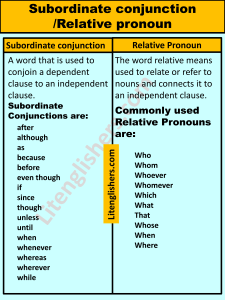
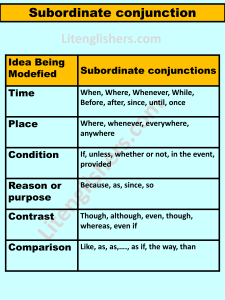
Examples:
- He had left before we got home.
- He is the man who was talking to me yesterday.
- I did not see them at the bus station because Hania and Liza arrived at the bus station before noon.
- Jeany realized that the train was late while he waited at the train station.
- Umar and Sufyan realized that Jinne was waiting at the train station after they left on the bus.
4: Compound Complex SENTENCE(2 Boys + Girl)→Boy + Girl + Boy
This means both complex and compound sentences features are added to it
“A compound sentence consists of two independent clauses and one or more dependent clauses.”
(2 Boys + Girl) means 2 independent clauses and 1 dependent clause and further, we can add more than 2 independent clauses and dependent clauses.
Structure:
- Independent clauses + subordinating conjunction + dependent clause + coordinating conjunction + independent clause
we use subordinating conjunction before a dependent clause and coordinating conjunction before an independent clause
(I missed the train because I was late so I had to take a bus)
(I missed the train) is an independent clause.
(Because) is a subordinating conjunction.
(Because I was late) is a dependent clause.
(so) is a coordinating conjunction.
(I had to take a bus ) is an independent clause.
Examples:
- He had left before we got home and he came back after ten minutes.
- Hareem doesn’t like cartoons because they are loud, so she doesn’t watch them.
- The dog started barking so the rat ran away I couldn’t keep up, so I stopped.



